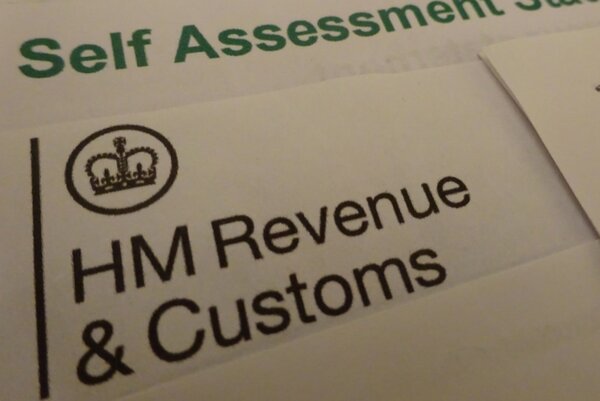Revolutionary Technology Transforms Tax Collection
HMRC's artificial intelligence system represents a fundamental shift in how tax authorities approach compliance and revenue collection. The technology analyses millions of data points across tax returns, financial transactions, and third-party information to identify anomalies that suggest underpayment or non-compliance.
Unlike traditional methods that relied heavily on random sampling or manual selection of cases for investigation, the AI system can process entire datasets simultaneously. The machine learning algorithms continuously improve their detection capabilities by learning from previous cases and outcomes. This adaptive approach means the system becomes more effective over time, identifying increasingly sophisticated methods of tax avoidance and evasion.
The technology can cross-reference information from multiple sources, including international tax data exchanges, to build comprehensive pictures of taxpayer activities and obligations.
How the AI System Identifies Tax Discrepancies
The AI platform employs multiple analytical techniques to identify potential tax discrepancies. Pattern recognition algorithms flag unusual transactions or reporting behaviors that deviate from established norms for similar taxpayers or business types.
The system can identify inconsistencies between different sections of tax returns or between submitted returns and third-party data sources. Natural language processing capabilities allow the system to analyse unstructured data, including correspondence and supporting documentation, to identify potential red flags. Risk scoring mechanisms prioritise cases for human review based on the likelihood and potential scale of non-compliance.
This ensures that HMRC's investigation resources focus on the most significant cases, maximising recovery potential while minimising disruption to compliant taxpayers who may have made innocent errors.
Unprecedented Revenue Recovery for Treasury
The £4.6 billion recovery represents a substantial contribution to public finances at a time when government revenues face multiple pressures. This additional income helps fund essential public services without requiring tax rate increases or spending cuts in other areas.
The figure includes both immediate payments from taxpayers who corrected their returns and structured payment plans for larger liabilities. Treasury officials have indicated that the recovered revenue has exceeded expectations by a considerable margin. The success has prompted discussions about expanding AI deployment across other areas of government revenue collection and compliance.
Financial analysts note that this technology-driven approach offers a sustainable method for improving tax collection efficiency without proportionally increasing administrative costs or staffing levels.
Technology Investment and Implementation Strategy
HMRC has invested substantially in developing and implementing its AI capabilities over recent years. The investment includes not only the technology infrastructure but also the training of staff to work effectively alongside AI systems.
The implementation followed a phased approach, beginning with pilot programs in specific tax areas before expanding to broader applications. The development process involved collaboration with technology specialists, data scientists, and experienced tax professionals to ensure the systems were both technically sophisticated and practically effective. HMRC established dedicated teams to oversee the AI systems, monitor their performance, and continuously refine the algorithms based on operational experience.
The investment in technology has been accompanied by significant upgrades to data infrastructure, ensuring systems can handle the vast volumes of information required for effective AI operation.
Privacy Concerns and Regulatory Safeguards
The deployment of AI in tax collection has raised questions about data privacy and the potential for algorithmic bias. HMRC has emphasised its commitment to protecting taxpayer information and ensuring all AI systems operate within strict legal and ethical frameworks.
The department maintains that all data processing complies with UK data protection legislation and that robust safeguards prevent unauthorised access or misuse of personal information. Regulatory oversight mechanisms ensure that AI decisions can be reviewed and challenged through established appeals processes. HMRC has stated that AI systems support rather than replace human decision-making in significant cases, with experienced tax professionals reviewing flagged cases before enforcement action proceeds.
Privacy advocates continue to monitor the system's operation, calling for transparency about how algorithms make decisions and what data sources inform their analysis.
Impact on UK Taxpayers and Businesses
For compliant taxpayers, the AI system's effectiveness in identifying non-compliance helps ensure fairness in the tax system. When everyone pays their proper share, the burden does not fall disproportionately on those who follow the rules.
HMRC has indicated that improved compliance may create opportunities for simplification in other areas of tax administration. Businesses have received guidance on how the AI systems affect their reporting obligations and what additional scrutiny they might face. Trade organisations have generally welcomed efforts to reduce the competitive disadvantage faced by compliant businesses when competitors evade their obligations.
However, some concerns remain about the potential for AI systems to generate false positives that create administrative burdens for taxpayers who have made inadvertent errors rather than deliberately avoided tax.
HMRC’s AI system has recovered £4.6 billion in unpaid taxes by using advanced data analysis and machine learning to detect non-compliance missed by traditional methods. The initiative not only improves fairness for compliant taxpayers but also proves that strategic technology investment can boost revenue and efficiency.
Balancing innovation with privacy safeguards, HMRC’s success offers a global model for modernising tax administration. As AI continues to shape the future of compliance, tools like the Pie app help individuals stay informed and manage their tax responsibilities effectively.











